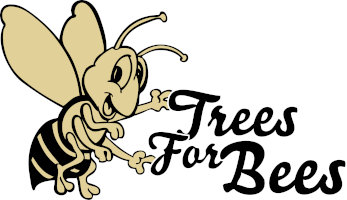
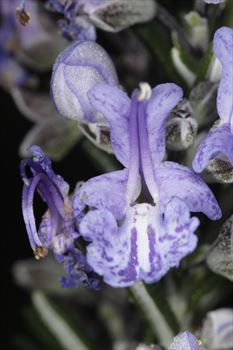
The flower has hidden nectar but honey bees can reach it by inserting their ‘tongue’ into the central cavity of the flower where the nectar is produced.
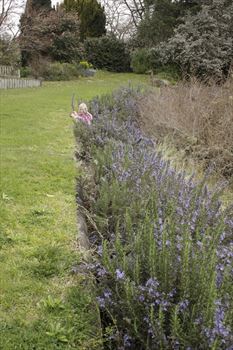
Rosemary is a small to medium shrub.
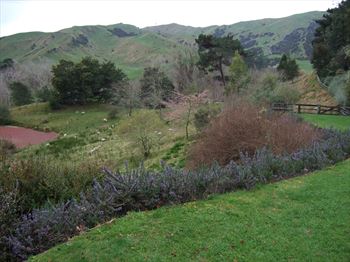
Upright rosemary hedge in the garden at the National Eastwoodhill Arboretum in Gisborne. Photos: Jean-Noël Galliot © Trees for Bees NZ.
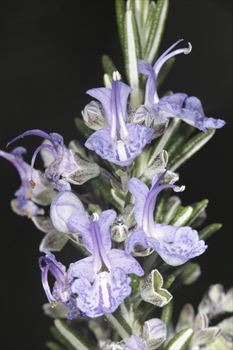
Rosemary flowers showing the upper and lower lips of the flower made from fused petals. The anthers are in pairs at the top of the two stamens.
Star Performer Status
Rosemary flowers most of the time
Rosmarinus officinalis in the Mint Family (Labiatae)
Rosemary (Rosmarinus officinalis) is a star performer because the plants are highly attractive to bees and almost always in flower, especially in spring and autumn and sometimes in winter. At times it stops flowering if it is too dry in late summer or too cold. We see honey bees almost constantly visiting isolated shrubs everywhere, even in urban areas.
Introduction
Rosemary is a hardy perennial native to the Mediterranean coast; it is drought-tolerant but slightly sensitive to frost. Because the plant is used extensively in cooking and in soaps, lotions, and creams, it is grown widely in gardens and on farms. The prostrate form is great for trailing over a bank or garden wall. Upright forms can be pruned for hedges or topiary. The cultivar ‘Tuscan Blue’ is a robust upright form with a high density of large flowers.
Pollen
Pollen Rosemary flowers have the classic ‘two-lipped’ shape of flowers in the mint family with upper and lower ‘lips’ formed by fused petals. The flowers have long curved and arching stamens rising upright against the upper lip (Figure 1). The anthers with their white pollen are relatively small so the amount of pollen in just two stamens per flower is not huge, but the protein level is good (21% in our sample).
Nectar
Nectar The nectar is hidden at the base of the flower, where the floral tube formed by the two ‘lips’ is relatively short at the base but wide open at the entrance (Figure 2). This arrangement allows honey bees easy access to nectar because they can reach the base of the floral tube. The nectary is a four-lobed disc surrounding the base of the ovary. The flower is a perfect fit for both honey bees and bumble bees because the lower ‘lip’ provides a good landing platform for the bees to hang onto while sipping nectar.
Planting Advice
Planting advice Rosemary is a very versatile plant to use for bee forage. Most commonly it is seen as part of an herb or vegetable garden, but it can be used in a wide variety of situations. Prostrate forms can be used as ground cover in gardens or cascading over garden walls, and also amongst bee forage tree or shrub plantings. Both the upright and prostrate forms of the plant can be used inside larger tree guards in Planting advice Rosemary is a very versatile plant to use for bee forage. Most commonly it is seen as part of an herb or vegetable garden, but it can be used in a wide variety of situations. Prostrate forms can be used as ground cover in gardens or cascading over garden walls, and also amongst bee forage tree or shrub plantings. Both the upright and prostrate forms of the plant can be used inside larger tree guards in
What did Walsh (1967) 1978 say?
Not in Walsh 1967
Exotic
True
Native
False